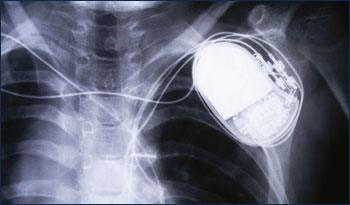
Dr. Suman Karmakar
MBBS ( Gold Medalist), Calcutta Medical College ( CMC), MD Internal Medicine, AIIMS, DM Cardiology, AIIMS

MBBS ( Gold Medalist), Calcutta Medical College ( CMC), MD Internal Medicine, AIIMS, DM Cardiology, AIIMS
What are the signs of needing a pacemaker?
Symptoms of sick sinus syndrome can include:
How does cardiac pacing work?

pacemaker helps monitor and control your heartbeat. The electrodes detect yourheart's electrical activity and send data through the wires to the computer in the generator. If your heart rhythm is abnormal, the computer will direct the generator to send electrical pulses to your heart.
What does it mean when your heart is pacing?
Transcutaneous pacing (also called external pacing) is a temporary means of pacing a patient's heart during a medical emergency. ... By convention, a heart rate of less than 60 beats per minute in the adult patient is called bradycardia. Not all instances of bradycardia require medical treatment.
Benefits. By regulating the heart's rhythm, a pacemaker can often eliminate the symptoms of bradycardia. This means individuals often have more energy and less shortness of breath. ... It will not prevent or stop heart disease, nor will it preventheart attacks.
Do pacemakers prolong life ?
Over 600,000 new pacemakers are implanted each year, with most of these devices in patients over the age of 60. ... Pacemaker Function at Time of Death Patients and their families often make assumptions that pacemakers prolong the dying process and thus prolong suffering. However, a pacemaker is not a resuscitative device.
Types of Pacemakers :
What is the most common type of pacemaker?
There are three different kind of permanent cardiac pacing devices: (I) single-chamber:one pacing lead is implanted in the right ventricle or right atrium; (II) dual-chamber PMs-DDD: two leads are implanted (in the right ventricle and in the right atrium); this is the most common type of implanted.